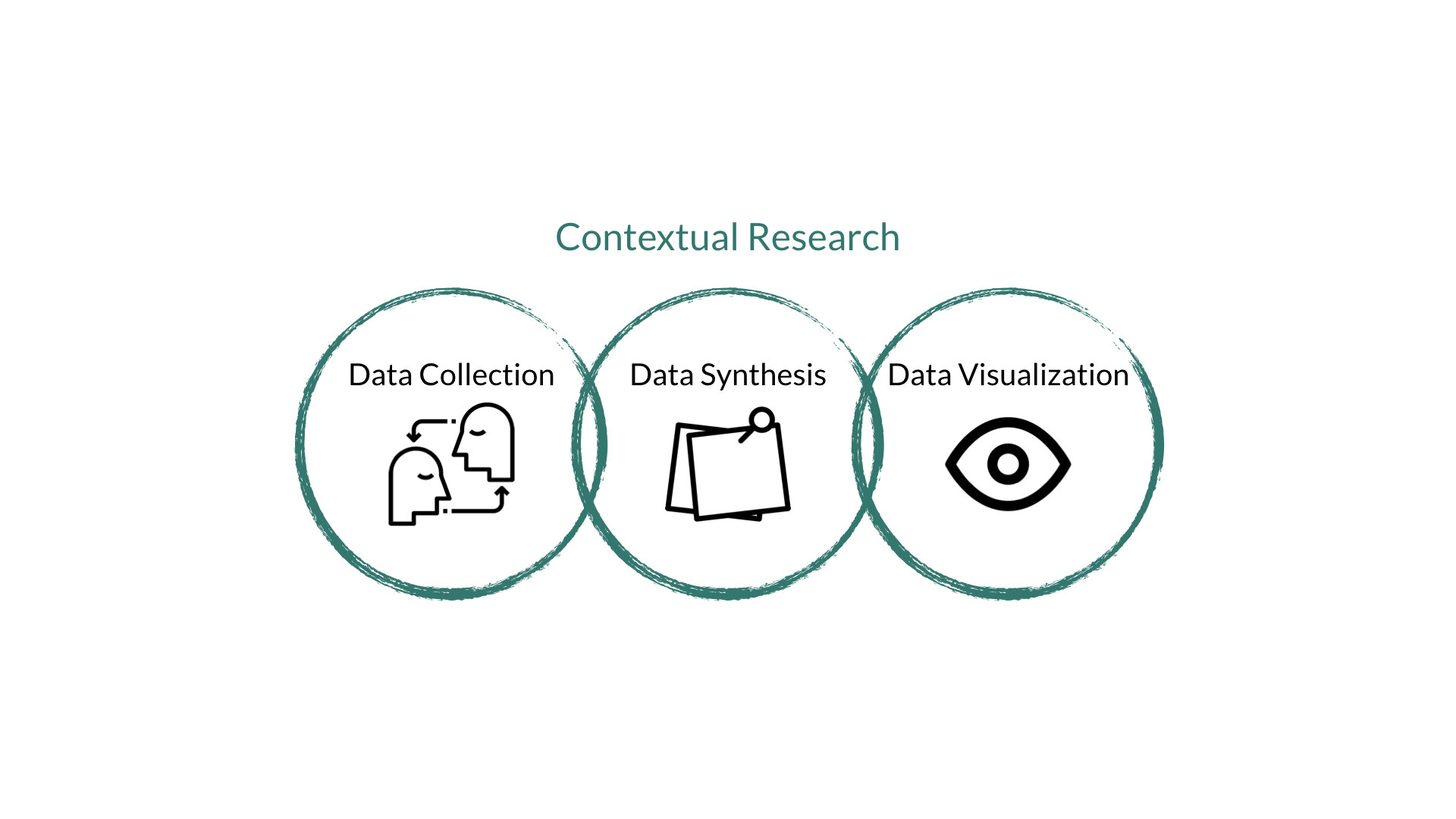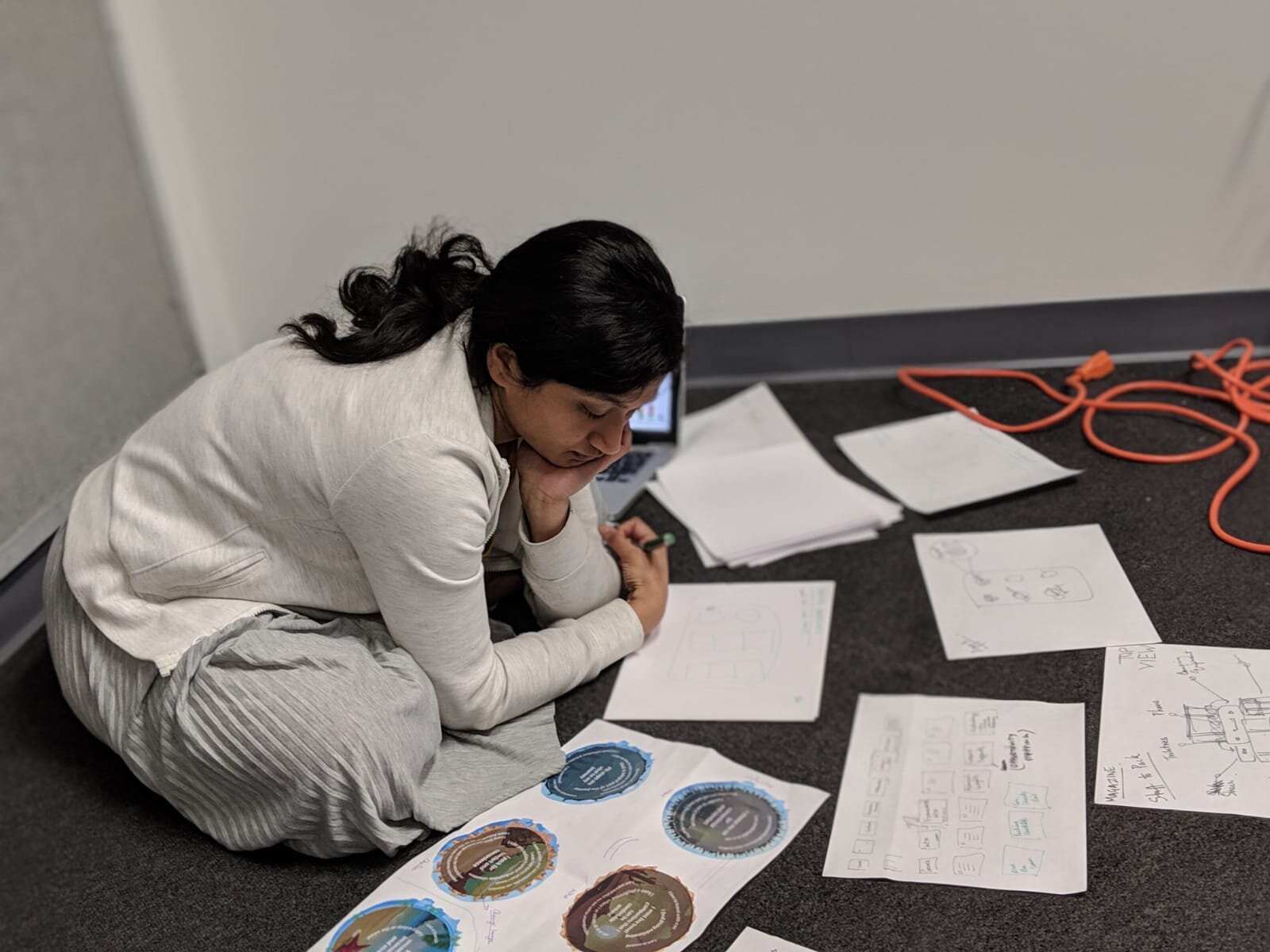
Supposing is good.Finding out is better.
-Mark Twain
The Ideal Experience of
A Road Trip
Course in partnership with
Lextant - The Human Experience Firm
Design Research
Observation
Affinitization
Data Synthesis
Sensory Cue Kit
Actionable Insights
Synopsis
Utilizing tools of contextual inquiry, my team and I, set out to understand and empathize with users to understand their preferences, choices and behaviors in relation to the context of road trips. Through the process of generative research, the ultimate goal of the research was uncovered through the unarticulated needs of the users’ data.
I along with my team, gathered qualitative data that we synthesized and analyzed to give rise to actionable insights.
A framework was visualized to serve as design criteria for
The Ideal Experience of a Road Trip
My Role & Contribution
Project Manager : Prepared a contextual research plan, organized the process of design research and delegated tasks. Ensure timely deliverables and produced update presentations through the 10 week process.
Documentation Manager : Documented all research findings through a process book and magazine.
Visual & Content Developer : Developed the content for the magazine showcasing the ideal experience of a road trip
Research Manager : Spearheaded the process of data collection, designed the discussion guide, the concept for a culture probe and the sensory cue kit.
Problem Statement
According to a AAA Travel survey, nearly 100 million Americans – 4 in 10 U.S. adults – planned to take a family vacation in 2019. Regardless of the season, the great American road trip remains a major draw for these families; about half of traveling families (53 percent) expect to pack up their cars for a road trip in 2019.
According to the 29th annual Portrait of American Travelers survey by MMGY Globalsix travelers intended to spend an average of approximately $4,300 per household.
TARGET AUDIENCE
Travellers in USA
Families
individuals and groups
All genders
Age 18+
People travelling using a car, RV, bike or van
How might we use contextual research to visualize the ideal experience of a road trip for travelers in USA
Timeline
10 Weeks
Jan ‘19 - Mar ‘19
Savannah, GA
Process and Tools
Final Outcome
More than fifty-five travelers, from regions across the United States of America, participated to share their past and ideal road trip experience. Their choices, preferences and behavior provided a gateway to explore trending signals. The insights discovered are visualized through a framework as shown below. Designers are encouraged to explore these unarticulated needs of travelers with this as design criteria to innovate the ideal experience of a road trip. The story of our key findings and synthesized insights from human-centered research is told through a magazine.
Challenges and Learning
Letting go of “conclusions” was a challenge in the beginning but we learnt to trust the data and allow it to emerge. The challenge in the beginning was defining what a road trip constituted of. As we progressed, we learnt that to most users, a road trip was a “get-away”, a learning experience and even an emotional journey.
The data we gathered was vast and varying widely. We were unsure how to find connection and organise the data into a framework. We made four iterations of the framework and constantly kept refining it. In the beginning, we were tempted to drop a lot of the data to keep the obvious connections.
However as we kept studying the framework, we began taking into consideration outliers and realised the data had two distinct contradicting opinions. We visualized the data as two personas and developed the final framework and a “Mindful Traveler” and “Free Spirit”
Come on a Journey
Here is a glimpse into our process and our project through this video created for future students to learn from and be inspired.







